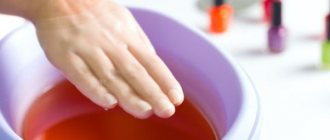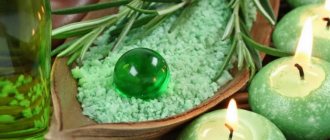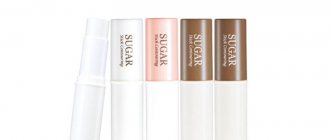People have been taking baths since ancient times. Previously, baths were organized both in natural springs and in specially constructed tubs and pools. Over time, taking a bath acquired the character of an art, as many appreciated not only the benefits, but also the pleasure of this process. And today it’s unlikely that anyone will be able to resist the temptation to soak in the warm water and relax. And if it’s a Jacuzzi, then additionally massage your body with jets of water. Water truly has the ability to not only remove dirt from the body, but also relieve physical and mental fatigue. And this procedure also helps save time when taking care of yourself, for example, a warm atmosphere will simultaneously improve the effect if you make hair masks with essential oils and rinse them off after taking a bath.
Water treatment (balneotherapy) is organized in medical complexes and sanatoriums with the goal of having a beneficial effect on certain human systems and organs in the most comfortable manner. Due to the availability in current conditions of various special bath products, a person can do these therapeutic, health-improving, relaxing procedures at home.
Types of baths and ways to take them correctly
Baths are taken for:
- washing;
- weakening the symptoms of certain diseases;
- treatment and psychological relaxation;
- losing weight;
- simple pleasure.
A modern person living in an urban environment will most likely take a shower to wash himself.
However, there are also those who, in order to feel truly clean, only need a font. But, unfortunately, not everyone knows how to take a bath correctly.
The procedure algorithm is as follows:
1. You need to immerse yourself in the font at least 20 minutes after eating, so as not to overload the heart and not disturb digestion.
Position in the bath - the chest should be slightly raised above the water for the same reason. 2. Before getting into the bath, you should definitely take a shower and wash off the dirt with a soap-containing product and a washcloth, cleansing your skin and opening your pores.
3. Bathing water should be at a temperature close to body temperature, that is, 35 - 37 oC. Although, there are varieties of hot and cold baths. Hot ones are indicated for colds and coughs. Water temperature – 40 ˚С, residence time – 5 – 10 minutes. Cold ones are possible to raise the tone of the body, for the purpose of hardening. Water temperature – 20˚С, time spent in the bath – 5 minutes. You shouldn't take cold baths without exercising. It is recommended to reduce the water temperature gradually, by a degree with each swim.
4. How long you need to take a bath depends on the purpose of the procedure. On average, you need to stay in the water for 15 – 20 minutes. There is no need to wash with soap after a bath; you can simply rinse your body with running water from the shower.
5. After swimming, even a seasoned person is not recommended to cool down suddenly. To keep warm, it is recommended to wrap yourself in a pre-prepared bath towel or warm robe.
6. It is best to take a bath before bed, and if during the daytime, then it is advisable to lie down for a while after it.
Water treatments for health - baths
July 10, 2013 by Tatyana
Print this article Font size 16
For human life, water takes first place. Our body is 70% water; it takes part in most physiological processes in the body. Without it, digestion, metabolism, synthesis in cells, removal of toxins from the body and many biological processes are impossible.
Being the source of life, water has the most beneficial effect on the entire body as a whole.
Daily water procedures - rubbing, hardening, dousing, showers and baths help strengthen the body. Thanks to them, metabolism is enhanced, the speed of chemical reactions in the body increases, the activity of the central and autonomic nervous system is activated, and thermoregulation improves. Water speeds up thinking, the work of all organs becomes more coordinated, the body is charged with vigor and strength, the skin becomes fresh, beautiful and pleasant.
Water procedures enhance the protective reactions of the entire body and many organs, sometimes located in different parts of the body. Thus, foot baths have a beneficial effect on the blood vessels of the brain, and hand baths have a beneficial effect on the blood vessels of the chest.
The effect of various baths on the human body is primarily determined by the temperature of the water.
Hot baths and wraps
Baths with elevated water temperatures (from 38 degrees) help relieve liver and kidney colic in diseases of the abdominal cavity, muscle tension and help recovery from colds.
However, hot baths for colds and flu can only be taken if there is no fever. If it does rise, it must first be normalized and then treatment continued. In such cases, it is effective to replace baths with wraps using hot towels. To begin with, the breasts should be wrapped in two cotton towels, not rolled very tightly. Place terry towels on top, folded as described above, soaked in hot water (60-65 degrees) and wrung out. Then continue wrapping using folded woolen cloth and finally cover the body with a warm blanket for 20 minutes. After the time has passed, put on a warm cotton shirt, preferably with sleeves, and cover yourself with a warm blanket. Keep warm in this way for at least an hour, and it is best to do the hot wrap procedure before bed.
Hot baths should not be taken for diseases of the cardiac and vascular systems, thrombophlebitis, active pulmonary tuberculosis, infectious diseases, or during pregnancy.
Warm baths
Baths with a water temperature not exceeding body temperature, approximately 36-37 degrees, have a relaxing effect on the body and are taken to relieve tension, fatigue, tone muscles, improve mood, and improve night sleep. They help lower blood pressure, dilate blood vessels and increase cardiac activity, secrete bile and improve gastric secretion. The gentle warmth of the bath relaxes muscle tissue and improves the functions of hormonal regulators. Warm baths are recommended for diseases of the nervous system, internal organs and musculoskeletal system.
Indifferent baths
The water temperature drops by one degree from 35 to 33.
It is recommended to take baths when the nervous system is overexcited. They have a calming effect, relieve pain, cramps and spasms, and improve metabolic processes in the body.
Cool and cold baths
The temperature of cool baths ranges from +21 to + 33 degrees.
The temperature of cold baths is from +20 degrees and below.
Such baths have a stimulating effect on the body and a beneficial effect on the central nervous system. They help harden the body, increase the tone of smooth muscles, increase heart contractions and increase blood pressure, and stimulate metabolism.
Cold and hot shower
The most effective water procedure, without a doubt, is a contrast shower - alternating hot and cold water. Hot water is usually used at a temperature of +39-40 degrees, and cold water is +18-20 degrees. To ensure the effect on the body is effective, alternations must be repeated at least five times.
A contrast shower is an excellent way to train blood vessels. It helps strengthen the cardiovascular system, activate metabolic processes in the body, enhance blood circulation, protective properties, healing and rejuvenation.
Most people's living conditions allow them to take baths and showers in a pleasant home environment. Water treatments have amazing life-giving powers. However, it is important to remember that you can stay in hot baths for no more than 5 minutes, warm baths are recommended from 10 to 20 minutes, indifferent – from 15 to 40 minutes, cool – no more than 10, and cold – from 2 to 5 minutes.
If the information was useful to you, share it with your friends by clicking the social network buttons. In the comments below you can express your opinion or tell about your own experience. Your reviews are interesting to us, to all readers and guests of the site.
You may also be interested in:
- Useful plants worthy of your garden
- Mulberry for health, skin and hair
- Colon cleansing with castor oil
Therapeutic baths
Indications for balneotherapy are diseases:
- colds;
- dermatological;
- skeletal system and musculoskeletal system;
- other.
Baths help expand pores, improve blood circulation, enable active components from various supplements to penetrate the skin into the body, and improve the condition of the skin itself. During medical procedures, essential oils (coniferous oils for colds, for example), salt, herbal decoctions, etc. are added to the water. By relaxing the body in warm water, a person relaxes his nervous system, which is why balneotherapy is also indicated for some nervous and mental diseases.
Editor's recommendations: Hyaluronic acid for beauty - characteristics and methods of use
What are the best baths for weight loss?
For weight loss, baths with soda and/or salt are recommended.
In combination with proper nutrition, sports and various types of cosmetic procedures, they really contribute to the loss of extra pounds, while deeply cleansing the skin, removing excess fluid from the intercellular space, accelerating cellular metabolism, and stimulating blood circulation. The procedure for how to properly take a bath with sea salt to lose weight, the first stage involves a shower and the use of an anti-cellulite scrub for problem areas.
You need to take 200-300 g of sea salt. You can add a few drops of lavender alcohol to the font. Residence time in water – up to 20 minutes. If you need to achieve a pronounced anti-cellulite effect, perform a vacuum massage with a jar after the bath. After this, it is recommended to wrap yourself in a towel or robe, immediately go to bed and cover yourself well. Excess fluid will leave the body. For a noticeable effect, the procedure should be completed in a course, taking baths every three days for a month.
The sequence of how to properly take a bath with soda is almost the same. To increase the beneficial effects of bathing on the body, you can combine soda and salt in a ratio of 150 g to 150 g.
Baths for relaxation
Just lying in the water after a busy day is already a pleasure. The pleasure can be doubled by adding foam, plain and table salt, herbal infusions and essential oils. It is better to pre-dissolve essential oils of various plants in a small amount of milk or rolled oatmeal decoction before dripping them into the font.
Restorative baths
For these, well-known and popular pharmaceutical herbs are used: chamomile, string, yarrow, marigold, mint and sage.
Foam bath
There are simple soap and scented foams. Simple foams gently cleanse the skin, while scented foams create an additional effect thanks to various components. Foams are not recommended for frequent use as they dry out the skin.
Bath with aromatic oils and extracts
- The most popular are pine baths (with extracts of pine trees). They soothe, improve sleep, relieve allergic reactions to the skin, and are good for colds.
- Tea tree oil and extract have antibacterial properties.
- A bath with sage will soothe and help with coughs.
- Mint and lavender extracts have a calming effect and will help you sleep soundly; in addition, regular aromatic baths with these additives help moderate your appetite, maintain your diet and not break.
How to take a relaxing bath
1. Water in itself relaxes, and therefore the main thing is to use it correctly. It is best to do this in the evening, just before bed. Before the procedure, you need to take your mind off your problems, put away your electronic gadgets and turn on pleasant, soothing music.
2. The temperature of the water in the filled bath should be between 35–37°C. You can increase it to 40°C. But this is only permissible for absolutely healthy people. People with heart disease should not do this.
3. You need to relax in the bathroom for no more than 30 minutes. Moreover, you should take a bath at least 2 hours after eating. You shouldn’t eat after the procedure, but a cup of aromatic herbal tea will come in handy.
4. A relaxing bath should not be taken daily, optimally 2-3 times a week. Moreover, before the procedure, it is advisable to clean the skin, because through clean pores, components of herbs and essential oils that have a beneficial effect on the body will enter the body.
5. Finally, make it a habit to take a relaxing bath regularly. In this case, your body will get used to the pleasant procedure and will respond better to it.










